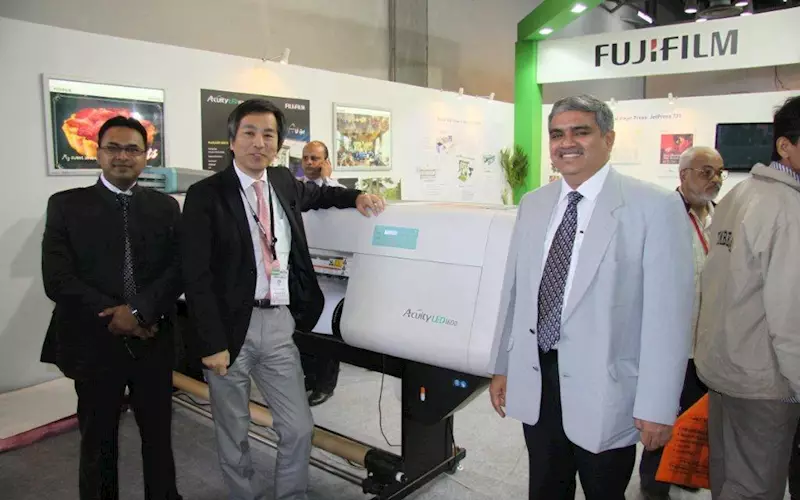Product Review: Fujifilm Acuity LED 1600
Padmakar Ojale, vice president at Fujifilm India talks to PrintWeek India at the show and says that producing stunning indoor signage and mock-ups for packaging has become that much easier with the Acuity LED 1600.
28 Feb 2013 | By Noel D'Cunha
When was the machine launched?
In India the Screen Print India show in Mumbai in 2012. The Acuity LED 1600 was unveiled at Igas in 2011 for the Japanese launch, subsequently refined and given a global launch at Drupa 2012. The Acuity 1600 got its India debut in September, 2012 during the Screen Print India show.
Who is it targeted at?
It is targeted at those players who do indoor signages and value-addition like in-store branding, where the displays can be seen from close quarters like displays, signs, labels, stickers, wallpaper and window graphics. It would be appropriate for someone who caters to food malls or even Cafe Coffee Day, where the you need catchy images to entice the customers to buy the products. It is not for those who are looking to serve low-end of the wide-format market.
The machine can also be useful in the packaging segment. It can offer clients pack mock-ups without requiring them to commit to an expensive offset run.
What are the available configurations and sizes?
The machine uses the LED UV inkjet technology and is available in a single configuration. The maximum print width is 1620mm and can print of a maximum media thickness of 13mm. Fujifilm’s Dimatix Q-class print heads fires Fujifilm Uvijet LED UV curable ink in eight-colour (cyan, magenta, yellow, black, light cyan, light magenta, while and clear). It can print high density white ink with colour in one pass.
What is the USP of the press?
It is best in class. There are no surprises because we know the heads, we know the ink, we know the substrate on which it prints, and we do not depend on third party service, because we have our own service capabilities.
What is the speed?
The printer is capable of printing 20 sq/mtr per hour in production mode, 13 sq/mtr in standard, 7.2 sq/mtr and 4.2 sq/mtr in high quality mode.
How about productivity?
As I said, if there is a continuous flow of jobs, it can print up to 20 sq/mtr per hour and can print for long hours, of course there has to be a decent gap. The material used for erecting our stall here (at PrintPack India 2013) has been printed on the machine, which is kept on display. We ran this machine overnight to produce stuff for the stand.
How flexible is the machine? Can the machine be custom built as per the customer’s requirement (with regards to perfecting, automation, software etc)?
We provide the RIP, but the customer is free to use third party workflow or software to create images, collage images, etc.
What are its eco-friendly credentials?
The machine is powered by LED, while the rest of the world is talking about UV lamps. The Acuity 1600 runs on less power requirement. This is Fuji’s contribution to the green side of our story.
Explain the features of the machine.
Acuity 1600’s VersaDrop multi-pulse jetting delivers droplets of different sizes in accordance with the definition needed by the image. It gives both smooth changes in tone and rock-solid spot colour. The Dimatix head, the LED UV lamps system and the Uvijet inks are all in-house technology, our core competence.
How easy is it to use?
See, understanding colour is in itself an experience. I think, three or four days of hand-holding of a person who is already running CMYK press or similar printers should not be an issue.
What training/service support is on offer?
We have four trained hardware engineers and placed in Mumbai, Delhi, Kolkata and Chennai. We also have two software specialist based out of Pune and Bengaluru.
How many installations worldwide? In India?
Not too sure of the overall worldwide figure, but in India, we have installed one machine at CIC Vision in New Delhi, with few more in the pipeline. We have a targeted four installs till the end of May, 2013.














 See All
See All